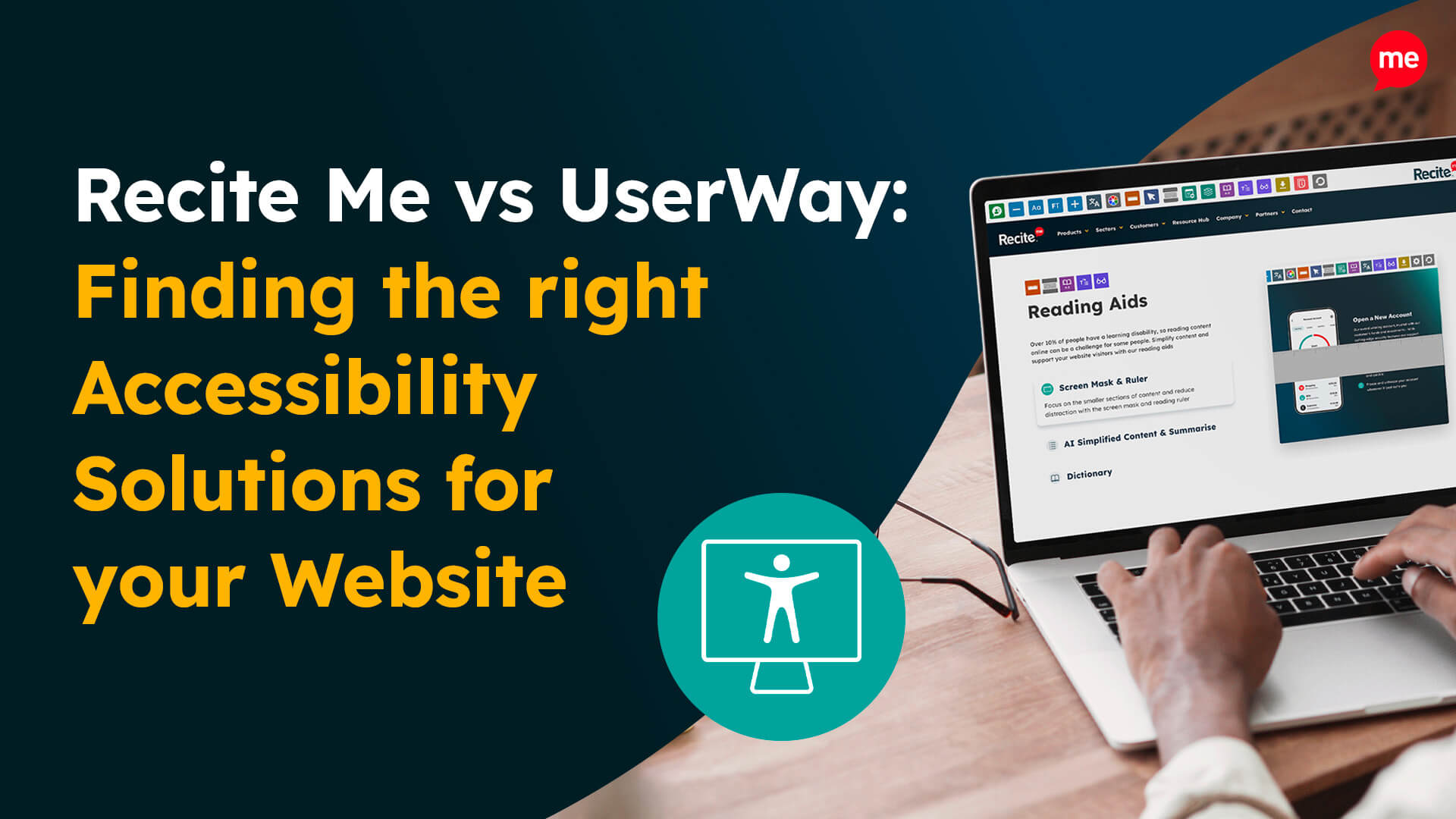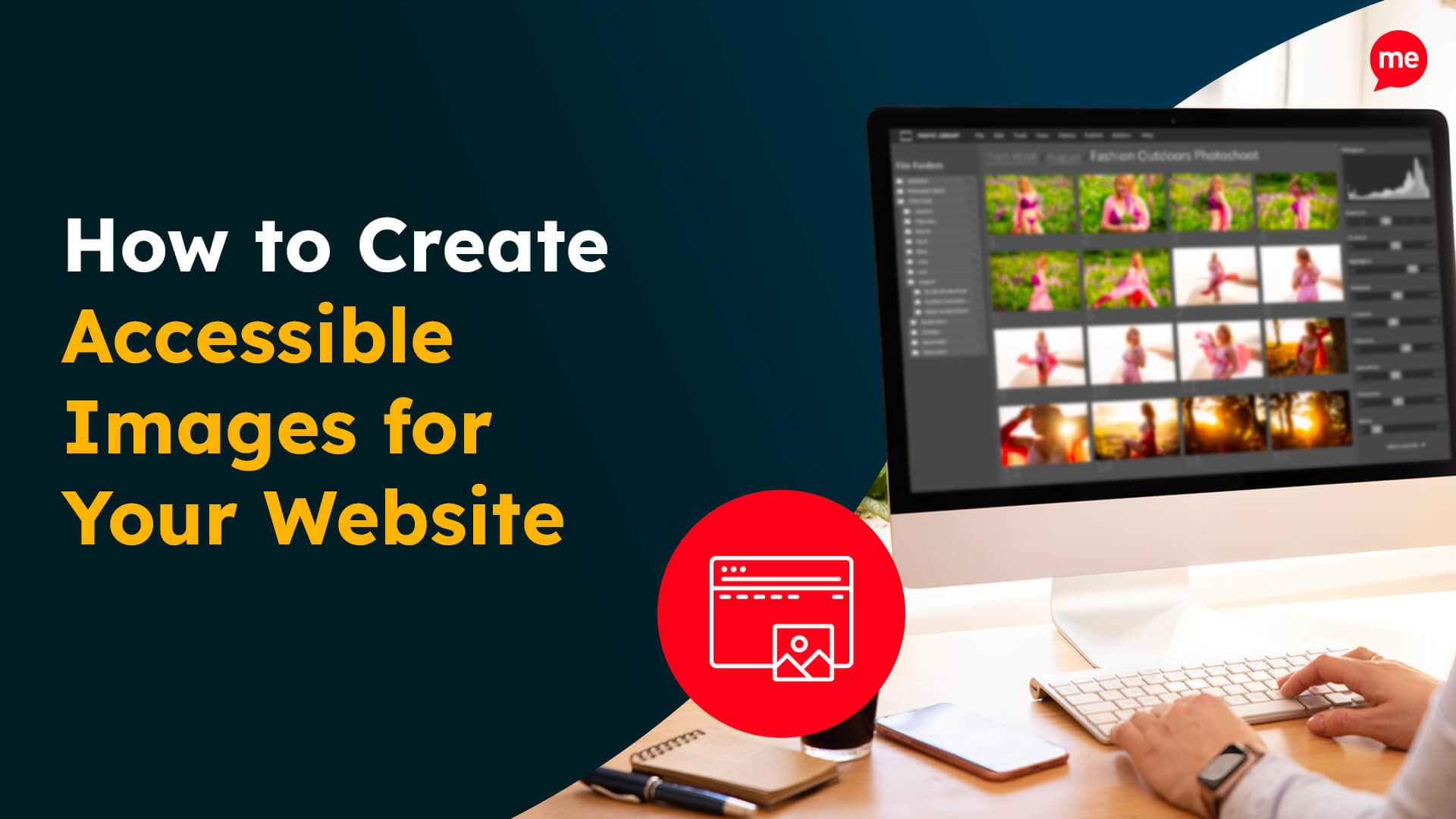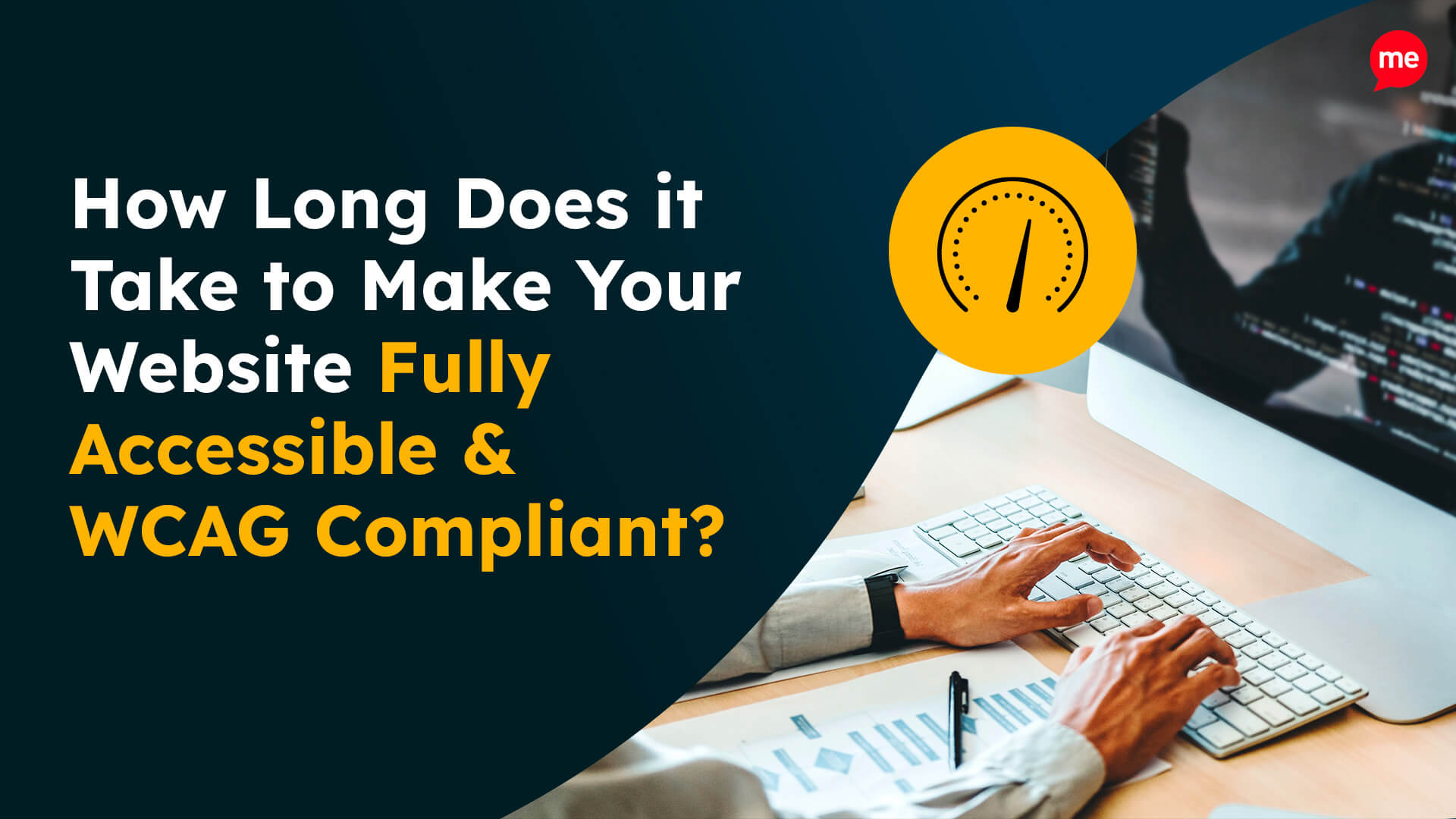Get Your Free Accessibility & Inclusion Toolkit
Download NowInclusion is more than a buzzword. It opens the door for individuals and communities to thrive. When we design systems, workplaces, and experiences that welcome everyone, including those with disabilities, we build a more equitable and innovative world. But what exactly is inclusion, and why does it matter so much?
Let’s explore how inclusion works, why it benefits individuals and organisations alike, and what actions you can take today to make a meaningful impact.
What is inclusion and how does it work?
Inclusion refers to creating environments where all individuals (regardless of ability, background, or identity) are welcomed, respected, and given equal access to opportunities and resources.
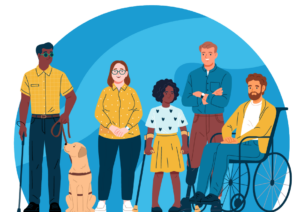
Unlike diversity which is about representation, inclusion focuses on intentional actions that remove barriers and enable everyone to participate. Inclusion works by designing accessible systems, policies, and environments from the outset and by continuously seeking input from marginalised voices.
As inclusive design leader Kat Holmes put it, “inclusive design doesn’t mean you’re designing one thing for all people. You’re designing a diversity of ways to participate so that everyone has a sense of belonging.”
The key benefits of inclusion: An overview
Looking for a quick answer? Below you can find a list of the key benefits that are created when thinking inclusively:
- Access to products and services
- Greater independence
- Boosted well-being and mental health
- Empowerment and skill development
- Enhanced innovation and problem solving
- Stronger brand reputation and market reach
- Regulatory compliance and risk management
- Expanded talent pool and employee retention
- Social cohesion and equity
- Economic growth and productivity
- Public health and well-being

You can click any of the previously listed benefits to jump to a more detailed section. Here you’ll learn exactly how they provide benefits and what you can do to maximize them.
Get a free automated accessibility check of your websites homepage. This will identify and highlight any compliance issues on your website. Followed by recommendations on how to implement the necessary changes to make your website more accessible.
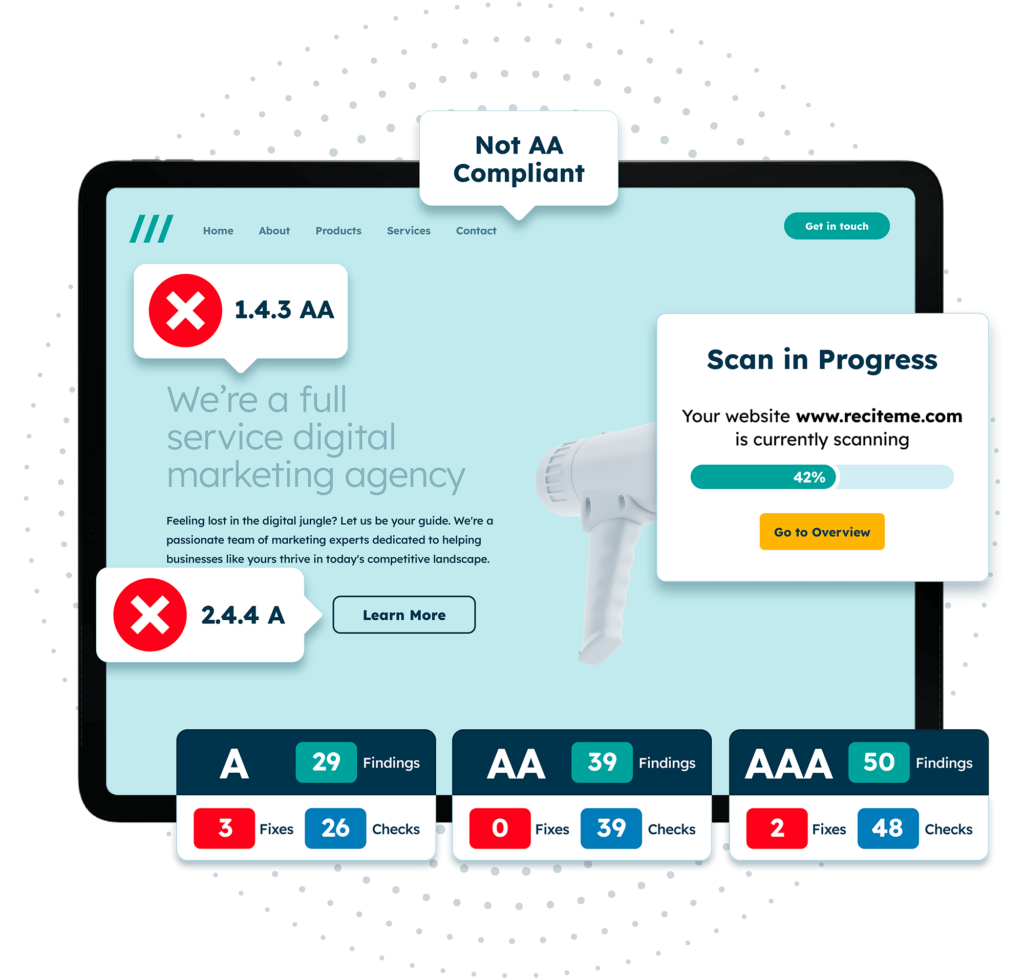
What are the benefits of inclusion for users with disabilities?
Inclusive design ensures that individuals with disabilities can fully participate in society. This goes far beyond legal compliance, It’s about human rights, dignity, and unlocking human potential.
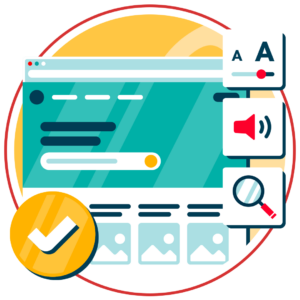
Access to products and services
Inclusive practices remove barriers that prevent people with disabilities from using everyday products and services, from websites and apps to public transport and customer service.
For example, captioning videos makes video content accessible to deaf users, while also benefiting people in noisy environments. This broadens your reach and ensures everyone can engage with your offering.
Greater independence
When systems and environments are inclusive, individuals can navigate the world more independently. Whether you’re booking a doctor’s appointment online, using an accessible ATM, or reading public signage with assistive tech.
A blind person using a screen reader to navigate an accessible website doesn’t need help from others to complete their online banking tasks, for example, and can keep their autonomy and privacy.


Boosted well-being and mental health
Inclusion directly impacts emotional health. When individuals feel excluded or encounter repeated barriers, it can lead to frustration, isolation, and stress. Inclusive environments foster belonging and dignity.
For example, an employee with a mental health condition who’s offered flexible hours or quiet workspaces is more likely to feel understood and supported.
Empowerment and skill development
When barriers are removed, individuals with disabilities are better able to contribute, learn, and grow. Inclusive education, employment, and community participation lead to confidence and the development of new skills.
Providing assistive technology and tailored support, for example, can help a student with dyslexia excel in academics and gain self-belief that extends far beyond the classroom.
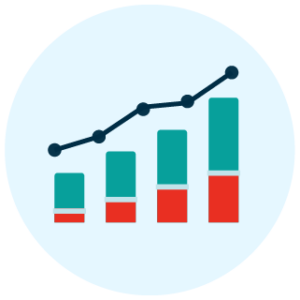
What are the business benefits of inclusion for organisations?
While inclusion is often framed as a matter of ethics or social responsibility, it also delivers tangible, strategic advantages for organisations of all sizes. An inclusive workplace doesn’t just benefit individuals, it strengthens the business itself.

Enhanced innovation and problem solving
Diverse teams that include people with different lived experiences are more likely to generate creative solutions. Inclusive environments encourage open dialogue, leading to better decision-making and innovation.
Stronger brand reputation and market reach
Adapting your products and services to be inclusive helps you connect with a broader audience. Consumers also increasingly expect brands to reflect their values, and inclusion is top of mind.

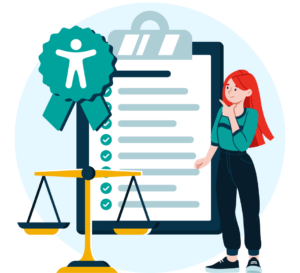
Regulatory compliance and risk management
Inclusive design helps organisations meet accessibility standards and anti-discrimination laws, reducing legal risks and ensuring ethical operations. An inaccessible website may not only alienate users but also expose a company to regulatory fines and even lawsuits.
For example, the Australian Disability Discrimination Act requires organisations to be made accessible to people with disabilities.
Expanded talent pool and employee retention
Inclusive hiring practices allow organisations to tap into a broader talent pool, including people with disabilities who are often overlooked despite their qualifications. Inclusive workplaces also foster loyalty and reduce turnover.
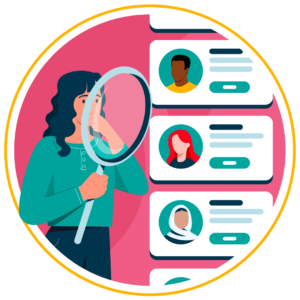
How inclusion benefits the wider society
The ripple effects of inclusion extend far beyond individual and organisational gains. Inclusive communities are not only fairer, they are also stronger, systems are more efficient, and societies are more economically resilient. When barriers are removed and participation is made possible for all, everyone benefits.
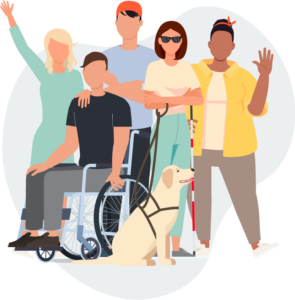
Social cohesion and equity
When everyone is able to participate equally, whether in education, work, or community life, it reduces marginalisation and social isolation. Policies such as inclusive education and accessible public transport services contribute to better integration of disabled individuals into everyday community life
Economic growth and productivity
Excluding people with disabilities from the workforce or consumer market leads to missed economic opportunities. Inclusion boosts GDP by unlocking untapped potential.
A recent report by Scope and the Centre for Social Justice found that closing the UK disability employment gap could boost the economy by £13 billion annually. By removing barriers and supporting disabled people into work, the UK can significantly increase productivity, reduce welfare costs, and tap into an underutilised but highly capable segment of the workforce.

Public health and well-being
Inclusive environments contribute to better mental and physical health for all. Accessible healthcare, inclusive education, and supportive workplaces reduce stress, promote resilience, and improve quality of life.
Our 40-page Digital Accessibility & Inclusion Toolkit helps businesses break down online barriers and make a real impact. It offers practical advice on all aspects of digital accessibility, from writing an accessibility statement to accessible website tips and inclusive hiring.
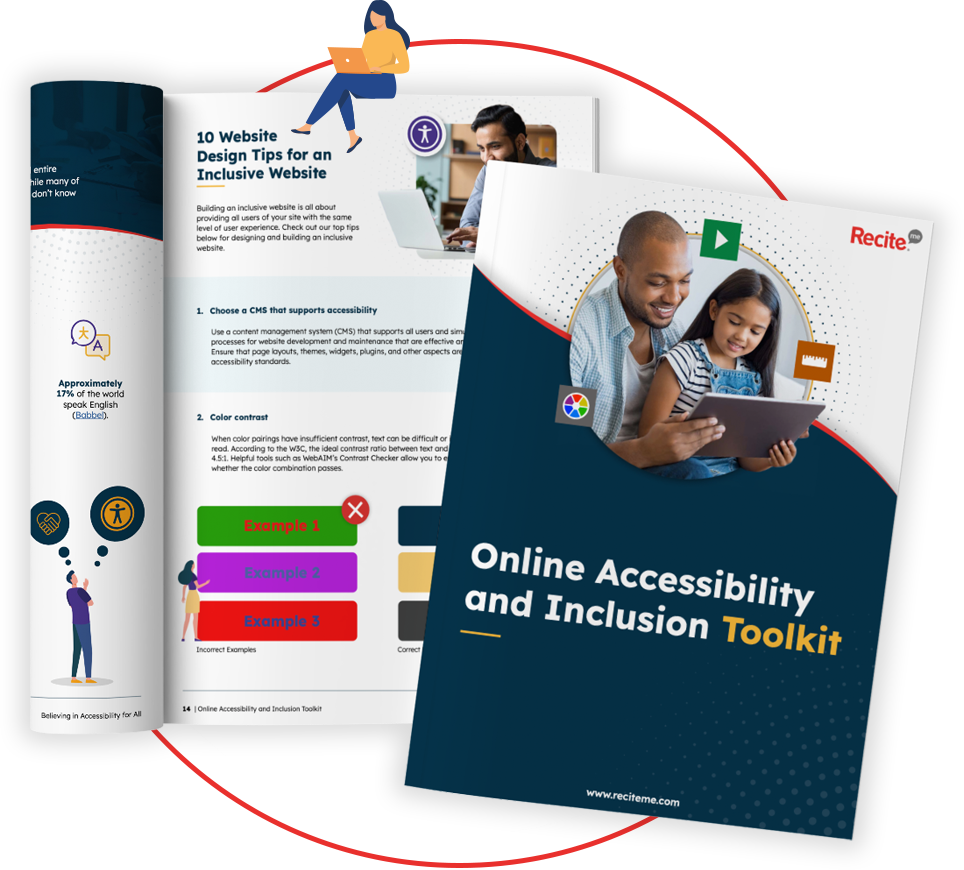
What are the inclusion barriers that individuals can encounter?
Despite meaningful progress in policy, awareness, and design, many barriers to inclusion still exist, both online and offline. These obstacles can prevent disabled people from fully participating in daily life, education, work, and the digital world.
Online barriers
As more of life moves online, digital accessibility is more important than ever. Yet many websites, apps, and digital platforms remain difficult or impossible to use for people with disabilities.
Examples of online inclusion barriers include:
- Websites that can’t be navigated by keyboard
- Videos without captions or transcripts
- Images without alt text
- Poor colour contrast for low-vision users
These digital barriers can block access to critical services like banking, healthcare, education, and job applications.
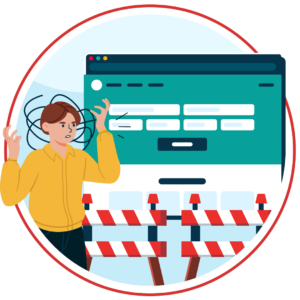
Physical barriers
Excluding accessibility from building design directly limits who can use and benefit from those spaces. Physical accessibility barriers can make it difficult and sometimes impossible for some individuals to participate in everyday activities.
Examples of physical inclusion barriers include:
- Lack of ramps or elevators
- Inaccessible public toilets
- Poor signage for people with low vision
- Narrow doorways that prevent wheelchair access

What can you do today to promote inclusion in your organisation?
Inclusion doesn’t always require massive infrastructure overhauls. There are small, strategic actions that can have a big impact too. Here are three key steps you can take:
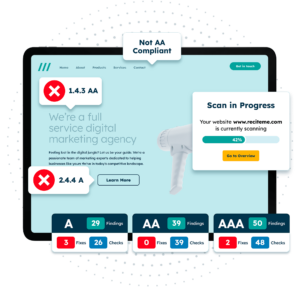
Ensure your website is accessible
Your website is often the first point of contact for customers, clients, and potential employees. Audit your website for accessibility using standards like the Web Content Accessibility Guidelines (WCAG). Simple fixes like adding alt text, increasing contrast, and enabling keyboard navigation can make a huge difference.
Automated tools like Recite Me’s Accessibility Checker can scan your website in minutes and provide you with a comprehensive report.
Train your staff on inclusion and accessibility best practices
Begin by offering comprehensive inclusion training that covers core topics such as disability awareness, unconscious bias, and the importance of accessibility in both physical and digital environments. This helps staff understand the broad impact of inclusion and how it relates to their work.
For digital teams, it’s essential to include training on web accessibility. Equip them with practical knowledge of the Web Content Accessibility Guidelines (WCAG), how assistive technologies are used, and the principles of inclusive design.
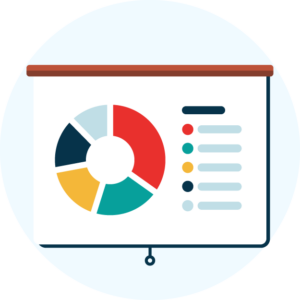
Implement inclusive recruitment strategies
Re-evaluate your hiring process to ensure it’s accessible to all candidates. Make sure to consider the following factors:
- Providing alternative formats for job applications such as email, video submissions, or phone calls, making the process accessible to people with varied needs
- Offering interview accommodations–clearly communicate that reasonable adjustments, like sign language interpreters, additional time, or quiet spaces are available and encourage candidates to request them
- Partnering with disability-focused recruitment networks
- Using inclusive language in job descriptions. Avoid jargon and unnecessary requirements that might deter applicants
- Reviewing your recruitment policies regularly
These steps not only attract diverse talent, but also signal your commitment to equity.
Inclusive recruitment doesn’t have to be complicated. This checklist breaks down everything you need to know to attract and retain diverse candidates. Download your checklist today and get started right away.
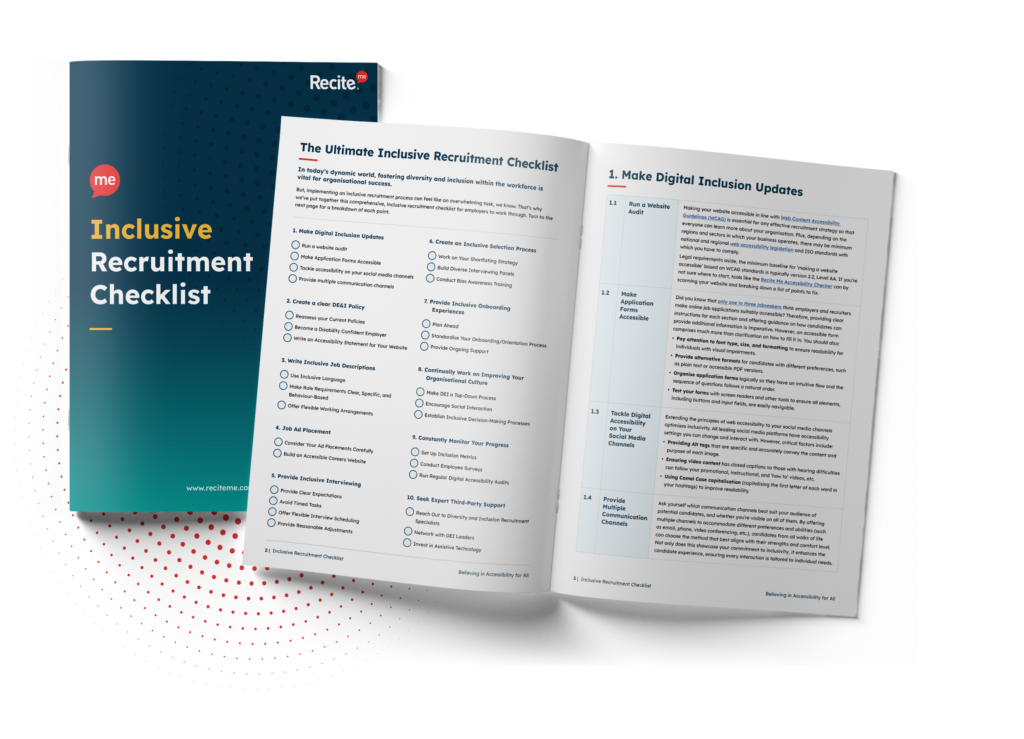
Conclusion: Start your journey to inclusion today
As you can see, inclusion should not be considered an optional extra when it clearly benefits individuals, businesses, and society as a whole. From unlocking innovation and expanding market reach to enhancing well-being and strengthening community ties, the case for inclusion is overwhelming.
By identifying barriers and taking proactive steps to remove them, we can create environments where everyone has the opportunity to thrive. Inclusion isn’t just the right thing to do, it’s the smart thing to do. Start today.

